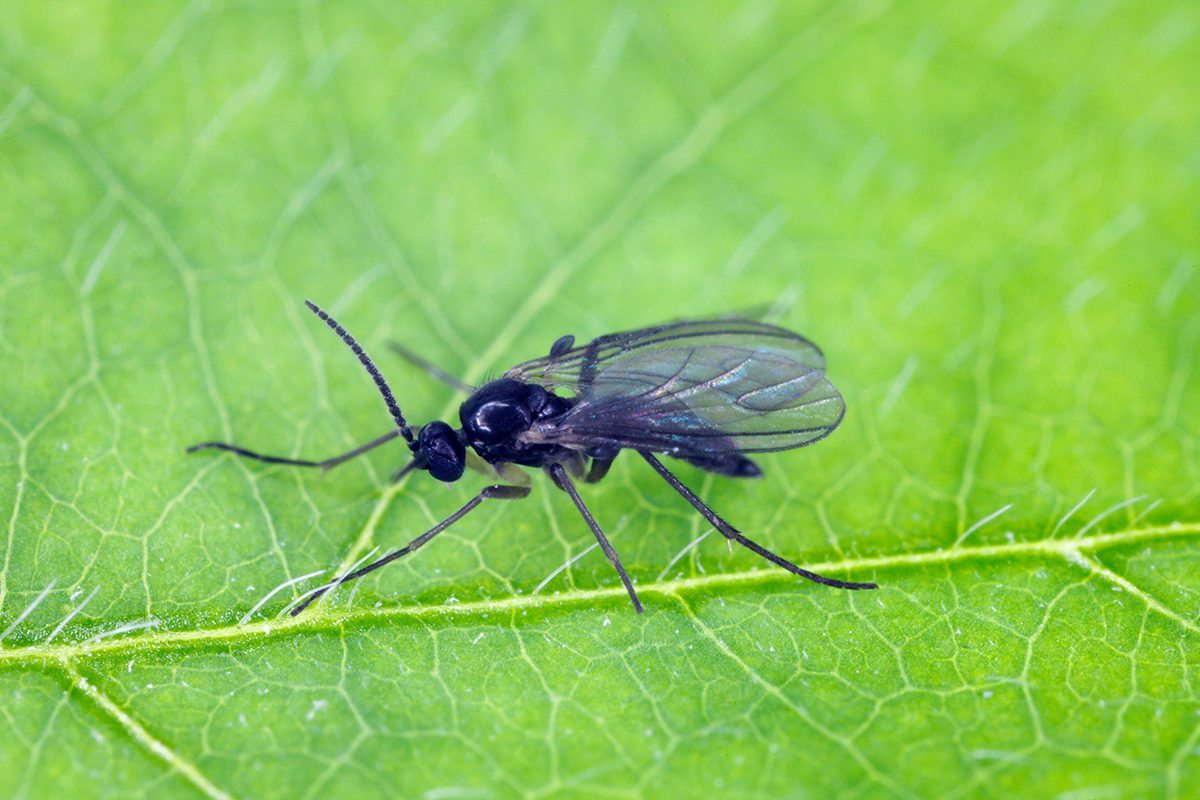

From Fees to Freedom: Richr’s Game-Changing Wealth Strategy in Real Estate, by Jason Rubin, and Glenn Orgin
Have you ever thought about why it costs 6% to…
January 9, 2024
Table of Contents:
Gnats are annoying and pesky pests. But how do they get into your home, to begin with? Unfortunately, they may enter your home once attracted to rotting fruit, dirty dishes, trash bags with spoiled food, and even damp potting soil. Learn more about how to get rid of gnats in your home.
We provide you a free home valuation and a breakdown of your closing costs to show you how much you will save and the amount of cash you will receive at closing
Or Call Us +1844-957-4247
Gnats are small black or brown insects with slender bodies and wings. There are biting and non-biting gnats. Most of the gnats found in households today do not bite. The most common types of gnats you may find in your home are fungus gnats, fruit flies, and drain flies. Gnats love moisture, rotting fruit, mold, and fungus. Therefore, they are often found during the summer when they lay eggs and procreate.
Gnats love the moisture in spoiled food, wet potting soil, overwatered plants, garbage cans, leaky pipes, moisture puddles, and the condensation found around vents and windows. Fruit flies love produce left in the open and rotting, particularly foods that smell sweet.
Fungus gnats love decaying plants and flowers and the mold they make. You can find them in potted plants where rotting leaves are left. Gnats are also attracted to people- they produce sweat, body heat, mucus, and carbon dioxide. Lastly, they are attracted to sweet-smelling lotions, perfumes, hairsprays, and deodorants. Gnats also love lights because they do not fly very well in the dark, so they swarm lights.
It is not too difficult to get rid of gnats using household ingredients.
Use all four methods simultaneously to eliminate existing gnats and prevent further infestation.
Keep your kitchen clean, seal your drains, and replace your potting soil.
Fungus gnats are most drawn to the soil in your indoor potted plants. A good plan is to remove the dead leaves from your plant and look for mold or fungus in the pot or soil. Then, replace the plant or clean the fungus to keep fungus gnats from being attracted to the plant.
Fruit flies, as their name suggests, are drawn to rotting fruit. Therefore, do not keep rotten or overly ripe food in your kitchen, and make sure when you dispose of rotting food, you close the trash bag tightly to keep the smell from escaping and attracting fruit flies.
Phorid or ‘drain’ flies are attracted to the moisture in your drains where there are leaks. Make sure to wipe the outside of pipes and fix any leaking ones. Fill any cracks and holes to keep dirt from getting trapped in them.
Search for where the gnats are breeding so you can kill the larvae and stop them from procreating.
Fungus gnats are best removed with steel wool and yellow sticky traps placed in potted plants. Cover the plant’s soil with steel wool to keep baby gnats from flying out of the pot and adult gnats from flying into the soil to breed.
Fruit flies place their larvae in fruit, so removing the fruit from your home is the best course of action. For adult flies, place sticky fly traps around your home where you see the gnats.
Phorid flies are attracted to your drains and place their larvae in the cracks and moist areas of the pipes. First, clean your pipes on the outside with soap and water, and then wipe them down with distilled white vinegar. Use a drain treatment to kill the flies when you pour the liquid down the drain pipe. Many use the active ingredient citronella to kill the phorid gnats. Cover the drain with glass overnight so the gnats cannot fly out. Then, run hot water down your drain the following day to flush out the gnats.
You can kill the fungus gnat with a spray solution of water, one part hydrogen peroxide (3% solution), and four parts water. Pour the mixture into the soil and look for bubbling to ensure it works.
This type of trap is effective and straightforward to make.
How to Make a Gnat Trap:
Fruit flies love your kitchen and the fresh fruit you leave out. Unfortunately, once the fruit starts to go wrong, it may make its move and infiltrate your home.
Here is a great way to get rid of fruit flies.
Ingredients:
Mix one liter of water with two tablespoons of apple cider vinegar. Once complete, add dish soap to the mixture and a tablespoon of sugar. Stir the mix and leave it out near the fruit. The insects will be attracted to the solution and get trapped and drown once they venture into the solution.
It’s time to buy smarter. Richr gives you cash back helping you buy the home of your dreams.
Call us now on 1-844-957-4247 or Start Searching Your Home Now!
Gnats can be attracted to sugary food and drinks left in your dining room. A way around them staying in your home is to set out a glass of something they’re attracted to but with liquid soap. Mix a small amount of dish soap with wine in a mirror.
The gnats will fly into the mixture and get stuck in it.
You may find gnats swarming your drain or sink. For drain flies, simple techniques using apple cider vinegar may not work.
Here is a better solution. Pour bleach water down your drain to solve the problem. Half a cup of bleach with one gallon of water should do the trick. Make sure you wear protective gear to avoid inhaling the fumes.
Gnats may enter your pantry. Here’s a great way to get them out of the pantry. Mash an overripe banana in a jar and place plastic wrap on the container.
Puncture the plastic wrap to make several holes. Gnats will go into the openings to get to the fruit, but the cover will keep them from being able to fly out again.
Getting rid of gnats in your living room can be simple. First, fill a spray bottle with one cup of water, one tablespoon of vinegar, and a few drops of dish soap. Then, the next time you see a gnat flying around, zap it in the air with a spritz. And don’t worry—this solution won’t harm your indoor plants.
throw out leaves and twigs.
Do not keep damp areas in your home by repairing leaking drains and faucets.
Gnats come in over 1,000 species, with some more common than others. The most common gnats are Phorid or ‘drain’ flies, fruit flies, and fungus gnats, but there are several more varieties. Most gnats live up to a month old and reproduce in warm climates. The females lay about 300 eggs on most surfaces, taking three days to hatch.
Here is a closer examination of common types of gnats.
Phorid flies can grow up to five millimeters and are found in blocked drains and sewers. The flies live in the debris that collects in the pipes. These flies can spread bacteria but do not usually cause disease in humans.
These tiny household gnats are attracted to rotting fruit, spoiled food, and trash cans.
Fungus gnats love the potting soil in your home and live on the mold and fungus produced by dead leaves and rotting roots.
Midges live in the swamp and may not be found in your home. However, they do bite and extract blood from humans. They are tiny and live in aquatic environments.
Sand flies also bite and live in dry, humid environments. They are not typically found in households. They live for about 20 to 40 days, and their eggs hatch at about ten.
Unique-headed bugs are gnats and grow to about 4 millimeters long. They live outdoors primarily under rocks and leaves.
These gnats have humpbacks and arrive in the early spring and summer. The males feed on nectar, but the females bite people and animals.
Gall gnats live on plants and place their larvae on plant leaves to interfere with their growth. They look like mosquitos but do not bite.
These flies live on wheat and damage several wheat crops annually.
Eye gnats are sometimes also known as grass flies and are attracted to the body cavities of their animal victims. They lay eggs in the animal’s cavities and are attracted to its bodily secretions.
Gnats do not usually go away on their own, especially once they start reproducing. So to keep them from entering your home put away your fruits, flush out your drains, and change the soil in your indoor plant pots.
Gnats lay eggs in various places, including dirty drains, sewers, rotting fruit, and leaves in potted plans. Anywhere that you can find ‘organic slime.’
Most gnats are not harmful to humans, just pesky pests.
Gnats are attracted to dirty drains, sewers, rotting fruit, and rotting leaves in potted plans. They love the sweet smell of any types of food, grime and debris left in cracked pipes and drains, and the mold and fungus found in the soil of house plants. Clean your home and rotate your plant’s potting soil to avoid pesky pests.
Gnats can be found in late spring and summer during the day, particularly around mid-morning and dusk. Gnats may be seen more frequently after droughts.
It’s time to buy smarter. Richr gives you cash back helping you buy the home of your dreams.
Call us now on 1-844-957-4247 or Start Searching Your Home Now!
Various types of gnats survive around the world, but most are harmless. Take precautions to keep gnats out of your home by taking out the trash, throwing out rotten fruit, fixing leaks and cracks in your pipes, and keeping the potting soil in your indoor plants refreshed.
If you get gnats in your home, follow at-home remedies to remove them safely.
If you’re looking to buy or sell a house and would like to discuss your option, Richr can help you!
Our fully licensed Concierge Team is here to questions and provide free, objective advice on how to get the best outcome with your sale and purchase.
Ready to get started?
Call us now on 1-844-957-4247 or enter your basic info
below. Our concierge Team will be in touch shortly to help.
Remember, this service is 100% free and there’s never any obligation


If you want the Richr team to help you save thousands on your home just book a call.

